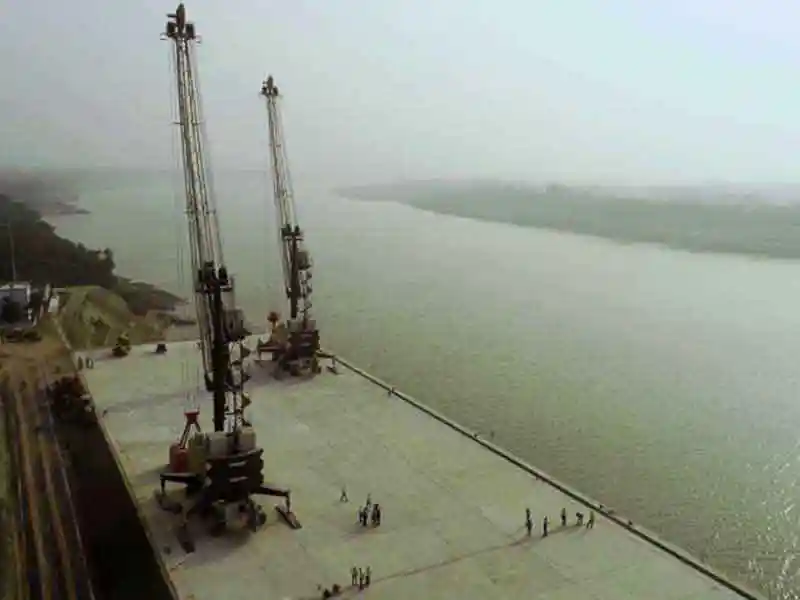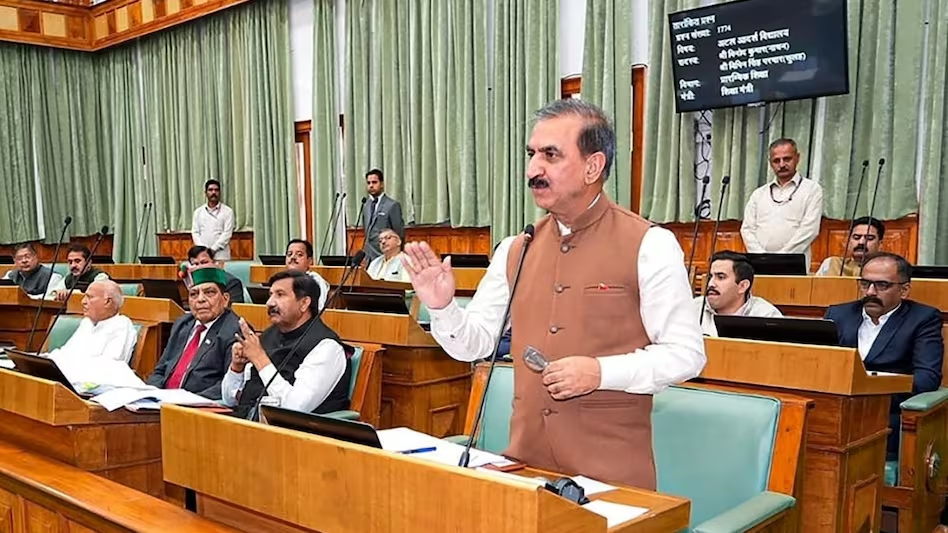- Courses
- GS Full Course 1 Year
- GS Full Course 2 Year
- GS Full Course 3 Year
- GS Full Course Till Selection
- Answer Alpha: Mains 2025 Mentorship
- MEP (Mains Enrichment Programme) Data, Facts
- Essay Target – 150+ Marks
- Online Program
- GS Recorded Course
- Polity
- Geography
- Economy
- Ancient, Medieval and Art & Culture AMAC
- Modern India, Post Independence & World History
- Environment
- Governance
- Science & Technology
- International Relations and Internal Security
- Disaster Management
- Ethics
- NCERT Current Affairs
- Indian Society and Social Issue
- NCERT- Science and Technology
- NCERT - Geography
- NCERT - Ancient History
- NCERT- World History
- NCERT Modern History
- CSAT
- 5 LAYERED ARJUNA Mentorship
- Public Administration Optional
- ABOUT US
- OUR TOPPERS
- TEST SERIES
- FREE STUDY MATERIAL
- VIDEOS
- CONTACT US
National Waterways (Construction of Jetties/Terminals)
National Waterways (Construction of Jetties/Terminals)

Regulations, 2025
Introduction
The National Waterways (Construction of Jetties/Terminals) Regulations, 2025, introduced by the Inland Waterways Authority of India (IWAI) under the Ministry of Ports, Shipping, and Waterways (MoPSW), aim to enhance infrastructure development and streamline the process of establishing jetties and terminals. These measures align with the government’s focus on Ease of Doing Business (EODB) and sustainable transportation to promote India's inland waterways sector as a key driver of economic growth.
Key Highlights of the Regulations
1. Scope
- These regulations apply to all 111 national waterways, covering both existing and new jetties and terminals across the country.
- Private, public, and joint ventures can develop, operate, and maintain inland waterway terminals after obtaining the necessary approvals.
- Permanent terminals can be operated for a lifetime, whereas temporary terminals have an initial tenure of five years, with the possibility of extensions based on performance and compliance.
2. No Objection Certificate (NoC) Requirement
- Any entity wishing to construct and operate an inland waterway terminal must obtain a No Objection Certificate (NoC) from IWAI.
- The NoC ensures compliance with safety, environmental, and operational guidelines before a project can commence.
- The IWAI will oversee approvals to ensure that terminals meet international standards for cargo handling and passenger transport.
3. Digital Portal for Terminal Applications
- The IWAI is developing an online application system to streamline and digitize the approval process for terminal construction and operation.
- This portal will reduce bureaucratic delays, improve transparency, and enable real-time tracking of applications, making it easier for private investors.
- The digital initiative aligns with the government's vision for Ease of Doing Business (EODB) and will increase private sector participation.
4. Encouraging Private Sector Participation
- The regulations are expected to attract foreign and domestic investors, making inland waterways a more competitive alternative to road and rail transport.
- Private investment in inland waterways has already grown significantly, with projects such as the Haldia multimodal terminal under Jal Marg Vikas Project (JMVP) being a successful example.
5. Alignment with JalVahak Scheme
- The JalVahak Scheme, launched in 2025, is expected to shift 17% of cargo movement from road and rail transport to inland waterways.
- With 4700 million tonne-kilometres of cargo transported annually, the shift to waterways will reduce logistics costs by 30–40%, making Indian exports more competitive.
- The World Bank-backed Jal Marg Vikas Project (JMVP) on National Waterway-1 (Ganga-Bhagirathi-Hooghly) is an example of an infrastructure boost for commercial cargo transport.
Advantages of the New Regulations
1. Boosting Trade and Investment
- Increased Private Participation: More PPP (Public-Private Partnership) projects will bring foreign direct investment (FDI) and private capital into the sector.
- With cargo movement on national waterways rising from 18 million tonnes in 2014 to 133 million tonnes in 2024, the new regulations are expected to further accelerate economic growth.
- Inland waterways reduce transportation costs per tonne-kilometre, making exports from Indian ports like Haldia, Paradip, and Mumbai more competitive in the global market.
2. Cost Efficiency in Logistics
- Water transport is 30-40% cheaper than road and rail due to lower fuel consumption and bulk cargo capacity.
- In countries such as Germany (Rhine River) and China (Yangtze River), waterways contribute significantly to freight transport, demonstrating the economic benefits of inland navigation.
3. Modern Infrastructure Development
- The regulations encourage the construction of state-of-the-art jetties and terminals, ensuring better integration with multimodal transport systems.
- Projects like IWAI's Sahibganj multimodal terminal on National Waterway-1 (Ganga) provide advanced cargo-handling facilities, increasing operational efficiency.
4. Environmental and Sustainability Gains
- Water transport reduces carbon emissions by 50% compared to road and rail transport, contributing to India’s net-zero emissions target by 2070.
- Sustainable and green technologies, such as solar-powered ferries and electric barges, are being encouraged under these regulations.
Challenges and Implementation Concerns
1. Bureaucratic Delays and Regulatory Compliance
- Approval Process: Lengthy approval processes for NoC issuance could delay infrastructure projects, discouraging private investment.
- Land Acquisition Issues: Land acquisition near rivers and waterways remains challenging due to encroachments and legal disputes, requiring clear guidelines for land allocation. .
2. Need for Technical and Skilled Workforce
- Design Standards: Terminal operators must adopt global best practices, similar to Europe’s extensive inland waterways network for smooth cargo operations.
- Skill Gaps: Lack of skilled professionals in marine logistics, dredging, and inland water transport engineering may slow implementation.
3. Environmental and Ecological Concerns
- Ecosystem Disruptions: Construction of jetties and terminals could disrupt aquatic ecosystems, affecting local biodiversity and fishing communities. .
- Waste Management: Proper oil spill prevention and pollution control strategies are needed.
4. Financial and Investment Risks
- Attracting Investors: Long-term financial commitments are needed for terminal maintenance.
- Revenue Uncertainty: Traffic volume fluctuations may discourage private sector investment.
Way Forward
1. Streamlining Approval Processes
- Introducing a single-window clearance system will ensure faster approvals for terminal construction and private investments.
- Clearer investment policies with long-term lease models can increase private sector interest in inland waterways.
2. Strengthening Public-Private Partnerships (PPP)
- Providing financial incentives, such as tax exemptions, low-interest loans, and capital subsidies, will attract private investments in the sector.
- Collaborating with global logistics firms will help adopt best practices in inland water transport operations.
3. Enhancing Technical Capabilities
- The government must develop specialized training institutes for inland water transport professionals to ensure a skilled workforce.
- Deploying real-time monitoring systems, such as GPS-based cargo tracking, will improve efficiency and safety.
4. Environmental and Safety Measures
- Strict pollution control regulations should be enforced to prevent water contamination from cargo spills.
- Encouraging eco-friendly barge designs and solar-powered vessels will ensure sustainable navigation practices.
Conclusion
The National Waterways (Construction of Jetties/Terminals) Regulations, 2025 mark a transformative step in India’s inland waterway infrastructure. By opening up private sector participation, digitizing processes, and enhancing efficiency, these regulations can reduce logistics costs, improve cargo transport, and boost economic growth. However, effective policy implementation, environmental safeguards, and stronger PPP models will be crucial for success. If executed effectively, these regulations will position India’s waterways sector as a global leader in sustainable and cost-efficient transport solutions.
Additional Information:
Inland Waterways Authority of India (IWAI)
- Established: 1986 under the Inland Waterways Authority of India Act, 1985.
- Regulating Body: Operates under the Ministry of Ports, Shipping, and Waterways (MoPSW).
- Primary Role: Develops, regulates, and maintains India’s inland waterways for commercial navigation.
- Key Functions:
- Develops infrastructure for cargo transport and passenger movement.
- Implements dredging, navigation aids, and multimodal transport connectivity.
- Oversees public-private partnerships (PPP) in inland water transport (IWT).
National Waterways Act, 2016
- Enacted: March 2016, replacing previous fragmented laws on waterways.
- Declared: 111 national waterways, covering 20,275 km across 24 states.
- Objective:
- Promote inland water transport (IWT) as an alternative to road and rail.
- Ensure sustainable development of navigable rivers, canals, and backwaters.
Jal Vahak Scheme (2025)
- Launched: 2025 under MoPSW and IWAI.
- Objective:
- Shift 17% of cargo transport from road and rail to inland waterways.
- Improve energy efficiency and reduce logistics costs.
Important National Waterways in India
|
National Waterway |
Route |
Length (km) |
Key States |
|
NW-1 |
Haldia to Prayagraj |
1,620 |
West Bengal, Jharkhand, Bihar, UP |
|
NW-2 |
Dhubri to Sadiya |
891 |
Assam |
|
NW-3 |
Kollam to Kottapuram |
205 |
Kerala |
|
NW-4 |
Kakinada to Pondicherry |
1,078 |
Andhra Pradesh, Tamil Nadu |
|
NW-5 |
Talcher to Dhamra |
623 |
Odisha |
- Significance:
- NW-1 and NW-2 serve as major trade corridors for bulk cargo and container movement.
- NW-3 is India’s first fully operational waterway, supporting passenger and freight services in Kerala.
- NW-5 and NW-4 are under development for coal, mineral, and fertilizer transport.
|
Also Read |
|
| FREE NIOS Books | |




